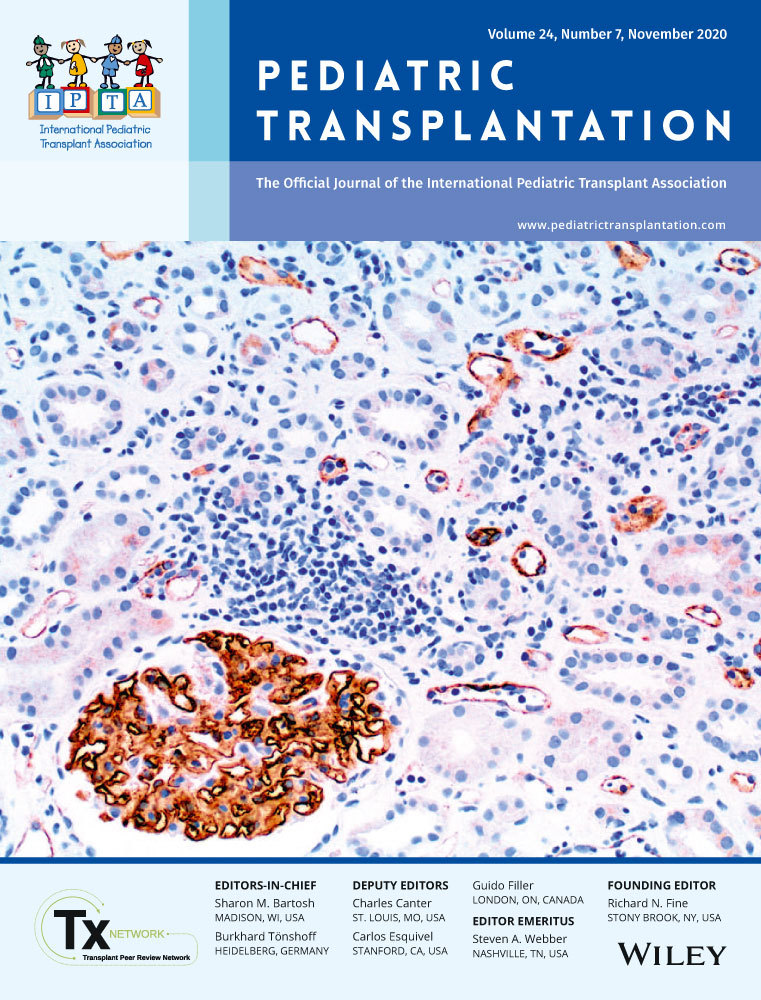Menstruation and contraception patterns of female adolescent transplant recipients
Abstract
Background
There is a lack of knowledge regarding menstrual cycles and contraception usage for adolescent transplant patients and families. Solid organ transplant patients start teratogenic medications which have pregnancy implications. We explore adolescent female solid organ transplant recipient and guardian's contraceptive knowledge and attitudes as well as menstrual patterns.
Methods
A cross-sectional descriptive research design was utilized to collect information from adolescent female transplant patients who are on mycophenolate mofetil after solid organ transplant and their guardians within our freestanding children's hospital via a survey. The sample consisted of all female adolescent patients who have completed a solid organ transplant and are on mycophenolate mofetil from April 2016 through May 2017.
Results
Twenty-one patients were approached, of which nineteen patients and seventeen guardians completed the survey. The average age of the patient was 16.2 years. The average age at time of transplant was 12.2 years. The type of transplants includes renal (57.1%), heart (23.8%), and liver (4.8%). There were six patients (33.3%) who had a history of sexual activity; among these patients, the mean number of partners in the last year was 1.2. Menstrual concerns included dysmenorrhea, irregular bleeding, and heavy bleeding pre- and post-transplant, respectively. Participants reported contraceptive counseling prior to and after transplant approximately half of the time.
Conclusions
Adolescent solid organ transplant patients have multiple reproductive needs including contraception, dysmenorrhea, and irregular bleeding. Integration of contraceptive knowledge into clinical care received by adolescents with solid organ transplants is supported by knowledge gained through this study.
CONFLICT OF INTEREST
Dr Davis-Kankanamge, Mrs Higgins, and Dr Allsworth have no financial disclosures or conflicts of interest to disclose as described by the American Journal of Transplantation. Dr Strickland disclosed a Merck pharmaceutical Honorarium as a FDA mandated trainer—Nexplanon.




